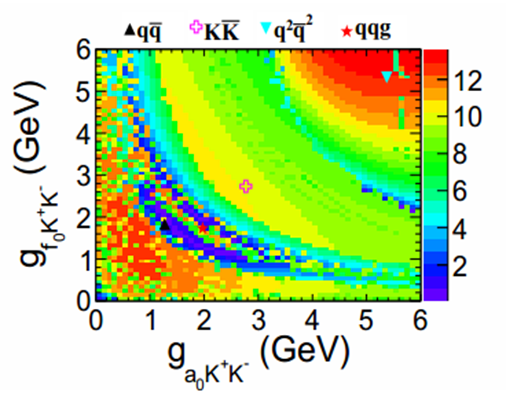

The first observation of a_0^0 (980)-f_0 (980) mixing at BESIII experiment was published recently in Physical Review Letters as a letter of “Editors’ Suggestion”.
Although light scalar mesons a_0^0 (980) and f_0 (980) are well-established in experiment, explanations about the nature of them have been controversial for several decades. These two states, with similar masses but different decay modes and isospins, are difficult to accommodate in the traditional quark-antiquark model and many alternative formulations have been proposed to explain their internal structure, including tetraquark state, KK molecule, or quark-antiquark gluon hybrid.
The mixing mechanism in the system of a_0^0 (980)-f_0 (980), which was first proposed in the late 1970s, is considered to be an essential approach to clarify the nature of these two states. However, the direct measurement of the mixing signals is only made possible with the world largest data samples of 1.31×〖10〗^9 J\/ψ and 4.48×〖10〗^8 ψ(3686) events accumulated with the BESIII detector. The signals of f_0 (980)→a_0^0 (980) and a_0^0 (980)→f_0 (980) are first observed with statistical significances of 7.4σ and 5.5σ , respectively. The statistical significance of the mixing signal versus the values of the coupling constants, g_(a_0 K^+ K^- ) and g_(f_0 K^+ K^- ) is shown in the following figure.

This direct measurement of a_0^0 (980)-f_0 (980) mixing is a sensitive probe to the internal structure of those ground state scalars and sheds important light on their nature. The new results from BESIII provide critical constraints to the development of theoretical models for a_0^0 (980) and f_0 (980). It is theorists’ turn to refine the calculations to understand the inner structure of the a_0^0 (980) and f_0 (980) mesons.
Reference: https://journals.aps.org/prl/abstract/10.1103/PhysRevLett.121.022001